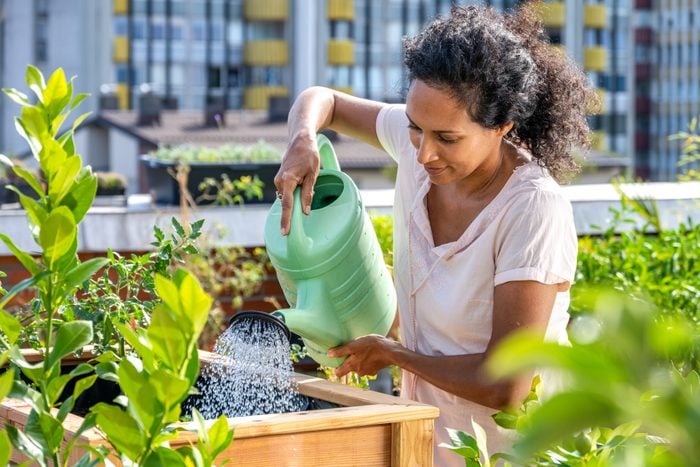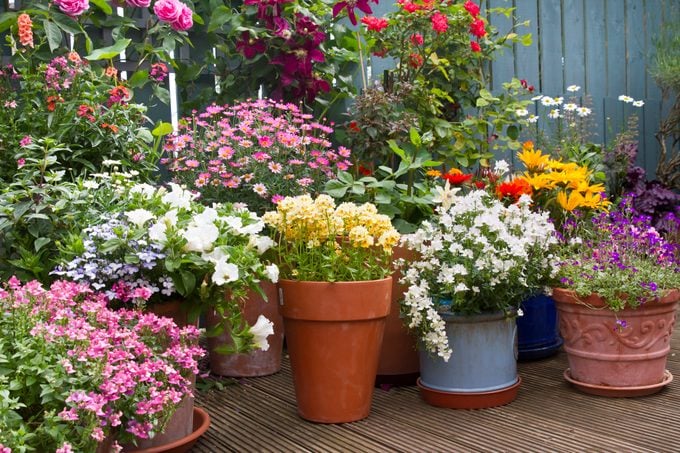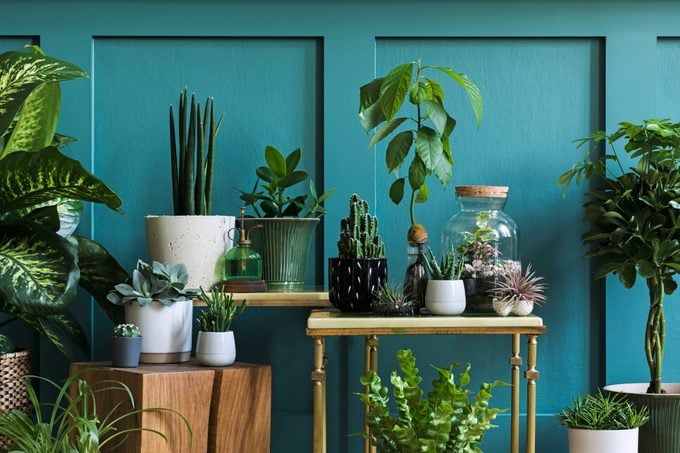When and How Often You Should Water Your Plants
Updated: Jan. 31, 2024

When plants fail, lack of water is often to blame. Discover when and how often to water plants by learning from the garden itself.
Inside and out, plants can be incredibly rewarding with their good looks, health benefits and bounty. After picking the correct plant for the right light, there is really only one other thing to master: when and how often to water plants. Like people, they can’t survive without good hydration. Even low-maintenance plants need a regular drink. Plant labels are a great place to start, but understanding plant needs in your environment will help you keep on a routine watering schedule.
How to Tell If Your Plant Needs Water
Plants show us just how thirsty they are with drooping stems and wilted leaves. That’s a signal for a quick and deep drink before the situation worsens. Even virtually indestructible plants like air plants will waver when they need water. And regardless of tough reputations, they do need it. Other factors could be at play including temperature, humidity, disease and insects, but when a plant loses its structure, lack of water is often the cause.
Dry soil is an early sign that plants are getting thirsty. Sometimes it is only dry on the surface. For indoor and outdoor containers, stick a finger an inch or two into the pot. If the soil feels dusty in the top inches, it’s likely dry all the way through.
In-ground plants are a little trickier. While a super solid dry surface or cracks are a cry for help, established shrubs, trees and perennials have deeper roots where it can be both cooler and more damp. When in question, put a gardening trowel in the soil to check for moisture several inches below the surface.
It’s a little tougher to tell with established evergreens and trees, but browning and early shedding often show a plant in water distress.
How often should I water my plants?
Plants need a watering schedule, so add one to the calendar and then prepare to be flexible. Their water needs are dictated by variety and seasonal changes, but reality is a little more complicated.
If plants look like they’re collapsing and the soil is dry, water immediately. It’s essential and potentially life-saving. If they’re not reinvigorated in a couple of hours, try watering again—especially those thirsty annuals. Porous soil and evaporation may have wicked water away before the plants could fully drink.
Outdoor Plants

Conventional wisdom suggests a garden needs a minimum of an inch of water per week. To check if Mother Nature or a sprinkler is doing the job, leave a shallow container in the garden to measure water. Established plants can certainly survive beyond a week, but the longer a drought lasts, the harder it will be for them.
According to the Institute of Agriculture and Natural Resources at the University of Nebraska, a larger shrub can survive on bout 3 gallons of water every 6 to 10 days during dry spells. Knowing your plants and yard can determine watering. Some thrive on dry soil, while others prefer a damp environment. Plant appropriately for your climate, geography and soil.
New plantings, including the vegetable garden and annuals, will need water much more frequently. Since the roots have not stretched in their environment, they’re not yet effective at seeking water. Daily watering helps establish them for their first couple of weeks. Taper to two to three times per week after that. Again, it’s determined by rainfall. Without enough rain, daily watering may still be needed. Dry soil and wilting plants will let you know.
Indoor plants

Indoor plants will require less water than those that are outside. They certainly don’t want to be watered daily and some would prefer even less. Plan to check weekly. It is best to know what you have to avoid overwatering. Succulents, for example, prefer the soil to be dry before watering. When plants are more actively growing in the spring and summer, they may need more frequent watering. Water around the base of the plant until you can see it seeping through the drainage hole. A watering can is helpful for gently directing water. Avoid letting plants sit in excess water to prevent root rot.
If starting vegetables inside or starting flowers from seed, follow the guidelines for each varietal. If the potting mix of an indoor plant just can’t retain water, it may be time to upsize the container. Follow these guidelines on how to repot a plant.
The Best Time to Water Your Plants
In an ideal world, water your garden in the morning. Obviously, rain can’t be scheduled and established trees and shrubs can thrive in normal weather patterns. But a small sprinkle won’t help since roots need a deep soaking. So when you’re relying on hand-watering or sprinkler systems, it’s best to aim early. That way, all your buds and blooms can face the day fully hydrated and foliage has time to dry before nightfall. Since heat causes evaporation, afternoon watering can be less efficient and more expensive.
Prepare for double duty if you’re a container gardener. At the height of the summer season, outdoor planted pots will likely need daily watering. Since most rain showers won’t penetrate foliage to the root level, it’s best to use a hose or a watering can. Small containers and pots where plants are fully rooted may even need water twice a day—once in the morning and once in the evening.
Other Tips for watering your plants
- Water deeply: A sprinkle from above will do very little. Soaker hoses near the roots of plants and shrubs can help with larger areas as opposed to systems that scatter water. For containers, make sure the soil is saturated and water comes out the base. Note that you should water the roots rather than the foliage.
- Drainage is key: If needed, add compost to soil to lighten up heavy clay that leads to pooling water. All containers and pots need protected drainage holes for outdoor and indoor plants. Avoid letting plants sit in water or in containers that collect water. That leads to root rot. If your container doesn’t have a drainage hole, try drilling one yourself or adding a layer of pebbles to help aerate the soil.
- Sinking plants: If a container plant is sinking or water drains too swiftly, check the roots. It may be time to repot your plant.
- Water through the seasons: Remember to water outdoor plants beyond summertime. It’s easy to forget when nights turn cooler, but plants will still need water when the skies are dry.